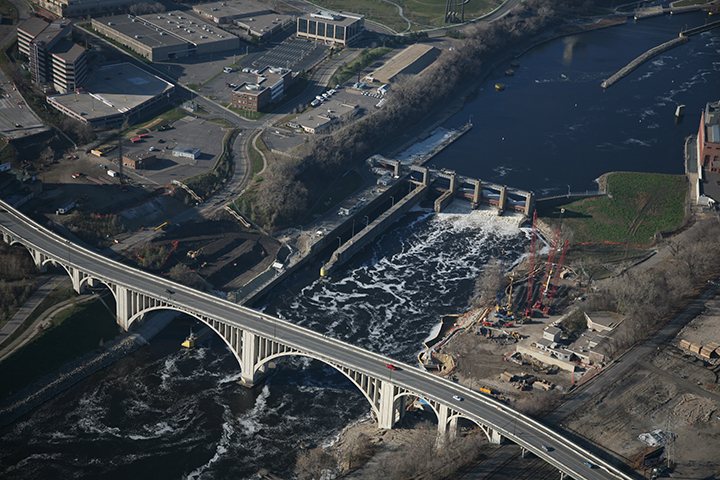The U.S. Army Corps of Engineers wants to cut almost in half the service hours at Lower St. Anthony Falls Lock and Dam in downtown Minneapolis (MM853) and Lock and Dam 1 (MM848) starting with the 2015 navigation season. (The season typically runs from March to November.)
The proposal announced this week comes as the third of the Twin Cities’ locks — Upper St. Anthony Falls Lock and Dam MM 853.9 — is expected to close by early next June. The Water Resources Reform and Development Act (WRRDA) of 2014 contained the death sentence for the river’s northernmost lock. Supporters of the move said it was to protect the waterway from menacing Asian carp.
The closing will mean that the other two locks will have less than 500 commercial lockages per year, the corps said. Lower St. Anthony had 1,300 commercial lockages and Lock and Dam 1 had 661 in 2013, corps statistics show.
“Total traffic will diminish considerably,” said corps spokesman George Stringham.
So less traffic means reducing the service hours at the remaining locks to 10 hours a day instead of 19 but still operating seven days a week.
Comments on the proposal must be submitted by Oct. 22, and may be sent to Kevin Baumgard, Deputy Chief, Operations Division, U.S. Army Corps of Engineers, 180 Fifth St. E., Ste. 700, St. Paul, MN 55101–1678, or emailed to: [email protected].
The exact date for closing the Upper St. Anthony Falls Lock and Dam has not been announced. The corps said its headquarters is evaluating the new law “and will provide guidance on how to proceed.” The lock handled 821,100 tons in 2013 and had a five year average of 750,000.
“If we can get the corps to agree to reopen until June 9, we’re hoping the limited hours will take place after that,” said Greg Genz, president of the Upper Mississippi Waterway Association, St. Paul. Except for excursion vessels, all of the commercial docks are above the upper lock.
He earlier told WorkBoat that the closing has “very little to do with Asian carp. They’ve been trying to get rid of river-dependent industries. Asian carp was just the newest weapon.”
Businesses that now use barges are expected instead to make several hundred truck trips a day to haul material. The association has said that shutting the lock would eliminate 127 jobs and mean an annual loss of more than $40 million in wages and output.




